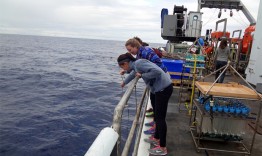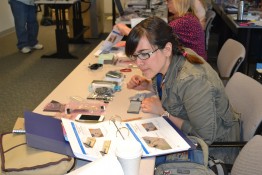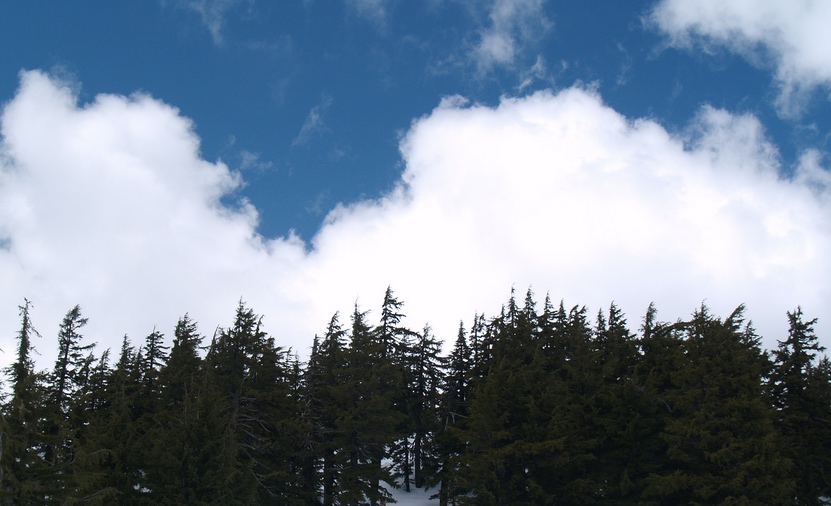When the Axial Seamount, an underwater volcano, erupted off the coast of Oregon in April, researchers knew within minutes that something spectacular was happening more than 300 miles offshore. Precision hardware installed by the University of Washington last summer let scientists see its effects almost instantly from shore. A team of researchers, engineers and students is now at sea working to maintain that equipment and assess the volcano’s aftermath.
Read more at UW Today »UW scientists engage the next generation of oceanographers through STEM partnership
For nearly 40 Washington State teachers attending the Olympic STEM Pathways Partnership workshop at the University of Washington in late-June, it was like Christmas had come early. Each educator sifted through a toolkit full of techy gadgets—a breadboard, ribbon cables, wires, antennas, and a microprocessor. The teachers used their cache of materials to assemble a powerful, data-collecting underwater sensor; and over the next several years, they’ll develop an approach to bring their new expertise back into the classroom.
Read more »Exploring Earth's final frontier
Covering more than 70 percent of Earth’s surface, the oceans act as our planet’s heartbeat, with differences in depths, currents, temperature and salinity marking changes in its pulse. While these measurements are fairly straightforward, the information they relay about Earth’s health is much more complex. As the planet warms, much of the heat is absorbed in the oceans, resulting in rising sea levels and changes to how water mixes and currents move.
Read more on the UW homepage »Could brighter clouds offset warming caused by greenhouse gas emissions?
Atmospheric Sciences’ Tom Ackerman and Rob Wood recently contributed to a proposal that would test the effectiveness of spraying sea-salt particles into marine clouds in order to make them brighter. According to The Economist, cloud physicist John Latham hypothesized that brighter clouds could cool the Earth enough to compensate for increased warming caused by greenhouse gas emissions in 1990. Several decades later and with the help of the two UW scientists, field tests on the subject could come to fruition.
Read more at The Economist »Join expedition online: UW students help install cabled deep-sea observatory
Students at the College of the Environment got a taste of what doing oceanographic research is all about this summer, spending numerous days at sea aboard the UW’s giant research vessel, the Thomas G. Thompson. The project: installing an underwater, cabled ocean observatory that will give scientists a continuous presence in the Pacific waters off of Oregon and Washington.
Read more at UW Today »





